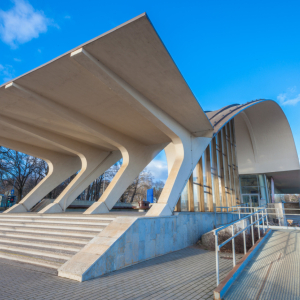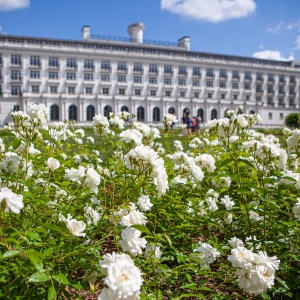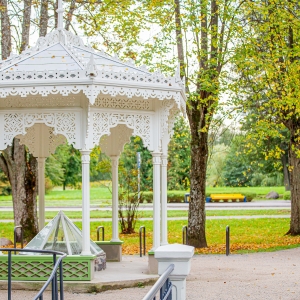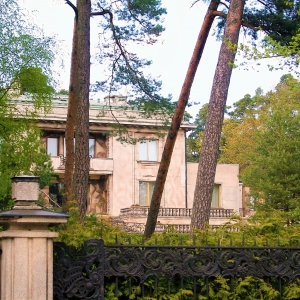Architecture
One of the greatest treasures of Jūrmala as a seaside resort town is its unique wooden architecture, which began to take shape in the 19th and early 20th centuries. Its development was driven by two key factors: the availability of timber, which made it possible to construct buildings within a single season, and the natural adaptability of wood to the shifting coastal climate of the Gulf of Riga. The aesthetic qualities of wood, along with Latvia’s centuries-old traditions of woodworking, also played a crucial role. Each building was created through close collaboration between the client and the craftsmen, often involving tinsmiths, glaziers, potters, and painters.
Wealthier residents could commission academically trained architects—mainly Baltic German and Latvian professionals, as well as architects of Russian, Finnish, and other nationalities. Notable names include Artūrs Mēdlingers, Wilhelm Bockslaff, Heinrich Scheel, and Eižens Laube.
Wooden heritage buildings dominate Jūrmala’s historic landscape, with brick constructions being the exception. Ornate wooden carvings around windows, façades, and rooflines characterise the town. Architectural features from different styles coexist harmoniously—classical symmetry, historicist references, flowing lines and floral motifs of Art Nouveau, the vernacular rootedness of National Romanticism, and the clean geometry of Functionalism.
During the Soviet period (1950s–1960s), Jūrmala saw the construction of typical housing blocks and large resort complexes, often disproportionately scaled in relation to the traditional summer cottages. Many of these structures are aesthetically incompatible with the historical townscape, though a few examples of post-war modernism stand out.
Today, contemporary architecture in Jūrmala seeks inspiration in the past—decorative wooden patterns, traditional proportions, and harmonious scale continue to influence modern design.
-
A Monument to Founders and Directors of Kemeri Resort More
-
Dubulti Railway Station More
-
Dwelling house – post office More
-
Dwelling house Jūras iela 2 More
-
Dzintari concert hall More
-
Kemeri Hotel More
-
Kemeri railway station More
-
Kemeri Resort Park More
-
Ķemeri Water Tower More
-
Kristaps Morberg’s Botanical Garden and Summer Cottage More
-
Melluzi Open Air Stage Park More
-
Sulphur water spring ‘Lizard’ (Ķirzaciņa) More
-
The Emilija Benjamin House More
-
‘Love Island’ (Mīlestības saliņa) More













